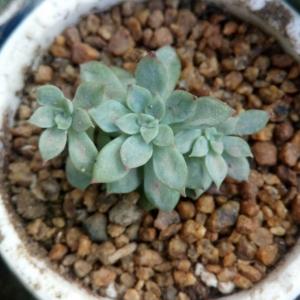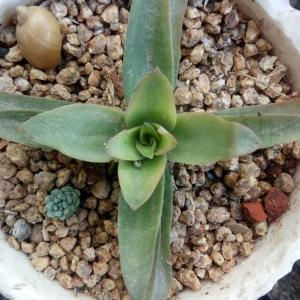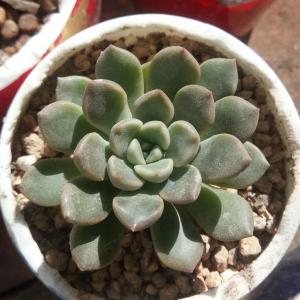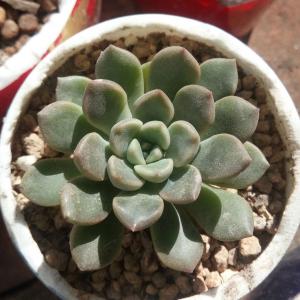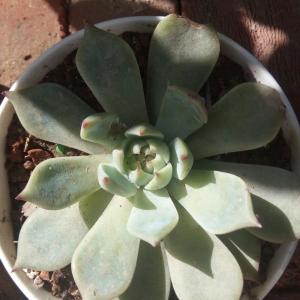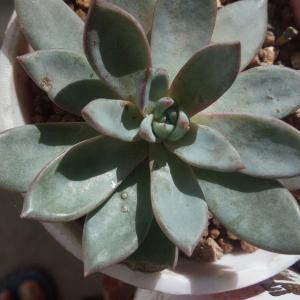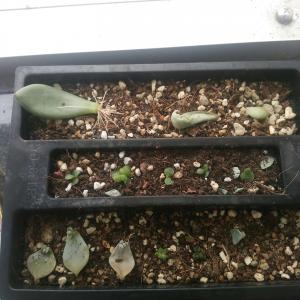文章
小九
2017年09月27日

秋天到了,花卉的施肥也应该因材施教,因植施肥,下面就跟大家介绍秋季常见花卉的施肥技巧!

对于一年开一次花的秋菊、桂花、山茶、杜鹃等,应及时追施2-3次以磷肥为主的液肥,否则不仅花少又小,而且还会出现落蕾现象。
对于一年开花多次的月季、米兰、茉莉、扶桑、四季秋海棠以及金橘、石榴等观果植物,除保证氮肥供应外,还应追施适量的磷钾肥,如磷酸二氢钾、过磷酸钙等。
对菊花、月季、木槿等秋季现蕾的花卉,除保留顶端一个长势良好的主蕾外,侧蕾均应及时摘除;对于长时间开花的种类,如月季、扶桑、茉莉、天竺葵等,应及时摘除已开过花的残花败梗,并修剪已开过花的枝梢,促使下部侧梢生长,以持续不断开花。对文竹、吊兰、绿萝等观叶植物,每隔半月施一次稀薄的液肥,以保持叶片青翠,提高御寒能力。
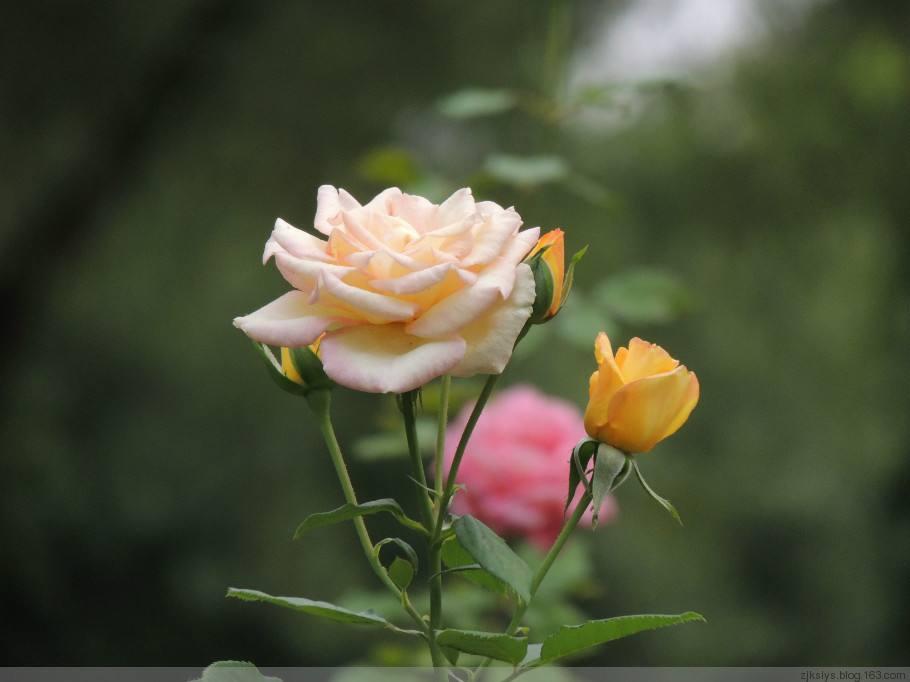
对观叶植物龟背竹、巴西木等可追施低浓度的含氮液肥,促使叶片葱郁翠绿。花卉施肥需要把握好施肥量,并且按照一定的周期进行。秋季施肥,要按照薄肥勤施的原则,每次的施肥量要少,但可以多施几次。

对于一年开一次花的秋菊、桂花、山茶、杜鹃等,应及时追施2-3次以磷肥为主的液肥,否则不仅花少又小,而且还会出现落蕾现象。
对于一年开花多次的月季、米兰、茉莉、扶桑、四季秋海棠以及金橘、石榴等观果植物,除保证氮肥供应外,还应追施适量的磷钾肥,如磷酸二氢钾、过磷酸钙等。
对菊花、月季、木槿等秋季现蕾的花卉,除保留顶端一个长势良好的主蕾外,侧蕾均应及时摘除;对于长时间开花的种类,如月季、扶桑、茉莉、天竺葵等,应及时摘除已开过花的残花败梗,并修剪已开过花的枝梢,促使下部侧梢生长,以持续不断开花。对文竹、吊兰、绿萝等观叶植物,每隔半月施一次稀薄的液肥,以保持叶片青翠,提高御寒能力。

对观叶植物龟背竹、巴西木等可追施低浓度的含氮液肥,促使叶片葱郁翠绿。花卉施肥需要把握好施肥量,并且按照一定的周期进行。秋季施肥,要按照薄肥勤施的原则,每次的施肥量要少,但可以多施几次。
2
2
文章
Dummer. ゛☀
2017年09月27日

All species of Honeysuckle plant (Lonicera) fall into two categories: 1) arching shrubs and 2) twinning bines, with the large majority being climbing plants that make for attractive Honeysuckle vines. These Honeysuckle vines produce trumpet shaped flowers, honey-like scents, and sweet nectar that attract butterflies, hummingbirds, and even humans who enjoy sampling the nectar.
This type of vine is quite easy to grow when correctly planted and maintained. If you find yourself having trouble getting your Honeysuckle vine to thrive, you may be making some of the following mistakes in caring for your plant.
These mistakes are common, but fortunately, they are also easily remedied.
1. Planting Too Late in the Season
Honeysuckle vines should be planted during the spring in cooler climates because their roots thrive when cool and shaded. Make sure to wait until the final frost before planting them.
When the timing is finally right, locate a spot for planting where they’ll get full sun, or at the very least, partial sun exposure. Plant your Honeysuckle at a soil depth of 18 inches (45 cm) and lay an organic fertilizer or compost over the top 3 inches (7.5 cm).
2. Too Little Water at First, Too Much Water Later
This type of vine is sensitive to the amount of water and moisture it receives. When you first plant your Honeysuckle, the plant will need a considerable amount of water to help it grow. However, by the time summer arrives your vine will be more fortified and only need small amounts of water, even during dry spells. Many people make the mistake of continuing to water the plant equally throughout these different stages, which is a definite recipe for harmful overwatering in the summer months.
The more important goal isn’t to provide the vine with excess moisture, but rather to retain the modest level of moisture that is proper for flourishing. To retain moisture, mulch the base of the plant heavily. A 2-inch (5 cm) layer of dried leaves, pine needles, or shredded bark makes an ideal mulch for the Honeysuckle vine.
3. Incorrect Use of Fertilizer
At the beginning of the growing season, add a balanced fertilizer (10-10-10) around the base of the plant. Make sure you choose a controlled release variety. In midsummer, fertilize again with a balanced formula liquid fertilizer to encourage continual flower blooms.
Be especially careful not to fertilize too much. Many growers don’t realize they’ve made this mistake until it’s too late because things will seem just fine at first. Using too much fertilizer will still cause the foliage to thrive, which will give the initial impression of a successful vine, but the excess fertilizer will negatively impact flowering down the line. Keep the soil pH between 6.1 and 7.8.
4. Poor Timing When Pruning
Allow plants to become well established before pruning. Pruning Honeysuckle too early can either reduce the number of blooms the vine produces or kill the whole plant. Honeysuckle vines should be allowed to grow for two years before pruning. Prune lightly during the growing season to encourage new growth. With light pruning, only remove old and bloomed-out flowers.
Older shoots on established plants should be removed during the spring to encourage later flowering. It’s safe to cut the plant back 1/3 for a major pruning. Late February to March are the ideal times to prune most Honeysuckle vines.
5. Mold from Poor Ventilation
Honeysuckle vines are prone to powdery mildews and molds. To reduce the chance of these developing on the vine, make sure there is adequate air movement around your plants. Always plant in open air.
6. Improper Support
Most Honeysuckle vines are grown with support systems, although sometimes they’re grown as ground cover for erosion control. If using support systems, it’s important to use them correctly. The trellis or arbor should be in place before planting. This removes the possibility of damaging the plant when trying to install a trellis on an area where a plant is already established.
Plant the vine 6 to 12 inches (15 to 30 cm) away from the support to allow enough room for it to grow. Once the vine starts climbing the support system, tie it to the arbor using a strong, stretchy material, like strips of old nylon hosiery. Cross the material between the stem and the support system to prevent the stems from rubbing together.

This type of vine is quite easy to grow when correctly planted and maintained. If you find yourself having trouble getting your Honeysuckle vine to thrive, you may be making some of the following mistakes in caring for your plant.
These mistakes are common, but fortunately, they are also easily remedied.

1. Planting Too Late in the Season
Honeysuckle vines should be planted during the spring in cooler climates because their roots thrive when cool and shaded. Make sure to wait until the final frost before planting them.
When the timing is finally right, locate a spot for planting where they’ll get full sun, or at the very least, partial sun exposure. Plant your Honeysuckle at a soil depth of 18 inches (45 cm) and lay an organic fertilizer or compost over the top 3 inches (7.5 cm).

2. Too Little Water at First, Too Much Water Later
This type of vine is sensitive to the amount of water and moisture it receives. When you first plant your Honeysuckle, the plant will need a considerable amount of water to help it grow. However, by the time summer arrives your vine will be more fortified and only need small amounts of water, even during dry spells. Many people make the mistake of continuing to water the plant equally throughout these different stages, which is a definite recipe for harmful overwatering in the summer months.

The more important goal isn’t to provide the vine with excess moisture, but rather to retain the modest level of moisture that is proper for flourishing. To retain moisture, mulch the base of the plant heavily. A 2-inch (5 cm) layer of dried leaves, pine needles, or shredded bark makes an ideal mulch for the Honeysuckle vine.
3. Incorrect Use of Fertilizer
At the beginning of the growing season, add a balanced fertilizer (10-10-10) around the base of the plant. Make sure you choose a controlled release variety. In midsummer, fertilize again with a balanced formula liquid fertilizer to encourage continual flower blooms.

Be especially careful not to fertilize too much. Many growers don’t realize they’ve made this mistake until it’s too late because things will seem just fine at first. Using too much fertilizer will still cause the foliage to thrive, which will give the initial impression of a successful vine, but the excess fertilizer will negatively impact flowering down the line. Keep the soil pH between 6.1 and 7.8.

4. Poor Timing When Pruning
Allow plants to become well established before pruning. Pruning Honeysuckle too early can either reduce the number of blooms the vine produces or kill the whole plant. Honeysuckle vines should be allowed to grow for two years before pruning. Prune lightly during the growing season to encourage new growth. With light pruning, only remove old and bloomed-out flowers.
Older shoots on established plants should be removed during the spring to encourage later flowering. It’s safe to cut the plant back 1/3 for a major pruning. Late February to March are the ideal times to prune most Honeysuckle vines.

5. Mold from Poor Ventilation
Honeysuckle vines are prone to powdery mildews and molds. To reduce the chance of these developing on the vine, make sure there is adequate air movement around your plants. Always plant in open air.
6. Improper Support
Most Honeysuckle vines are grown with support systems, although sometimes they’re grown as ground cover for erosion control. If using support systems, it’s important to use them correctly. The trellis or arbor should be in place before planting. This removes the possibility of damaging the plant when trying to install a trellis on an area where a plant is already established.

Plant the vine 6 to 12 inches (15 to 30 cm) away from the support to allow enough room for it to grow. Once the vine starts climbing the support system, tie it to the arbor using a strong, stretchy material, like strips of old nylon hosiery. Cross the material between the stem and the support system to prevent the stems from rubbing together.
0
0



